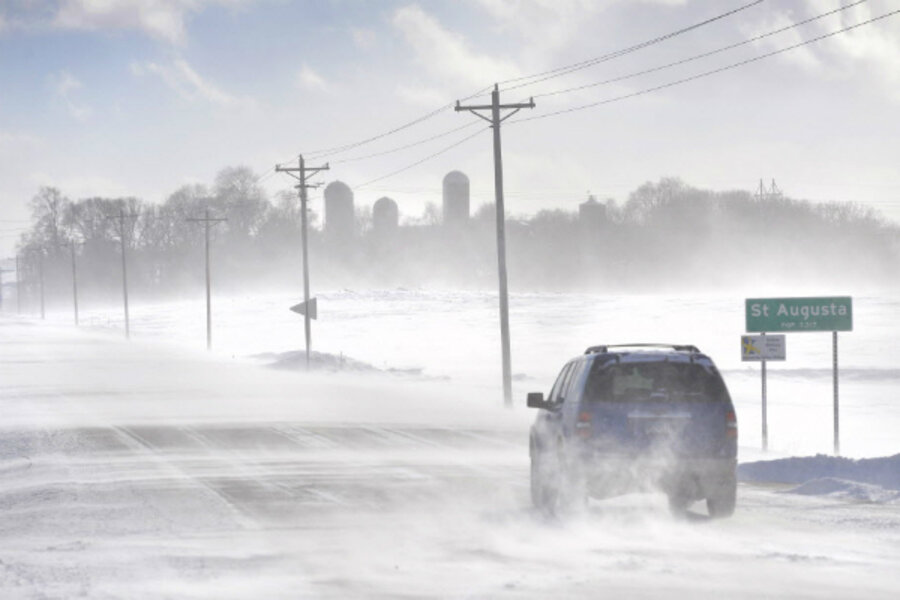Polar vortex: Frigid Arctic air again grips Midwest, nears record cold
| CHICAGO
The collective groan you are hearing is from the Midwest, as people look out the window and think, “Not again!”
The polar vortex – a far-reaching Arctic air mass shooting southward – returned early Monday morning to 20 of the Lower 48 states, creating subzero temperatures that are expected to last through Wednesday. Chicago, Cincinnati, Pittsburgh, Milwaukee, Detroit, and others are expected to hit the lowest temperatures of the season to date. School cancellations, government office shutdowns, and public transit standstills have made many cities resemble ghost towns, as people opt to remain indoors, shielded from wind chills that are driving temperatures to double digits below zero.
“I’m getting really tired of this weather,” says Sally Russell, a beautician, while waiting for a bus in the Logan Square neighborhood on Chicago's near northwest side. “Winters are traditionally bad in Chicago, but this one seems much worse.”
The National Weather Service (NWS) reports that temperatures are expected to remain 10 to 30 degrees F. below normal Monday across the central region of the US, and that wind chills will be lowest – as cold as minus 30 – across the Dakotas and throughout Minnesota and Wisconsin.
In the Chicago area, a wind chill warning is in effect through Tuesday as lows are expected to fall to minus 24, according to the NWS. Wind gusts of up to 30 m.p.h. are blowing snow, creating hazardous visibility on roads, which the weather service says could create “near blizzard conditions” in surrounding rural areas.
Already, records are falling. Thirty-five of the past 50 days have involved snow falling in Chicago, something that has happened only 13 times in the recorded past. If snow continues to fall almost every other day this winter, meteorologists predict this season to be one of the heaviest snowfall totals in the region's history.
“It looks like the Arctic air mass will hang around through the middle of this week, and we’ll slowly see temperatures moderate across the northern Plains and temperatures will get colder across the Northeast and New England,” says Kelsey Angle, a NWS meteorologist.
Chicago Public Schools and corresponding school districts were closed Monday, the second time this month; earlier, CPS closed for two days when temperatures fell below zero for 36 hours. The Department of Family and Support Services is extending the hours of six regional warming centers throughout the city on Monday and Tuesday. More than 450 flights were canceled at O’Hare International Airport, and at least 80 flights were canceled at Midway Airport, according to the city.
Lake-effect snow in southwestern Michigan is breaking records this month. Monday brought accumulation totals for the month to 38 inches, which surpassed the old record of 29.6 inches set in January 1978. Since Dec. 1, the Detroit area has received 50.5 inches of snow. Hundreds of schools throughout the area are closed, as temperatures are expected to fall to minus 30 by Tuesday. Flint, Mich.; Toledo, Ohio; Fort Wayne, Ind.; and Indianapolis, Ind., are all experiencing their second-snowiest January on record.
Inside a coffee shop in Chicago’s Wicker Park, a group of teenagers say they’re happy for a chance to skip a day of high school. But they acknowledge that the weather makes it too cold to do anything outdoors, so they are trapped.
“We’re just waiting it out,” says Jake Topperman. “At least the sun is shining and you can pretend that the world out there is comfortable.”





